System shown in figure is released from rest . Pulley and spring is mass less and friction is absent everywhere. The speed of 5kg block when 2kg block leaves the constant of with ground is (force constant of spring k=40N/mandg=10m/s2)
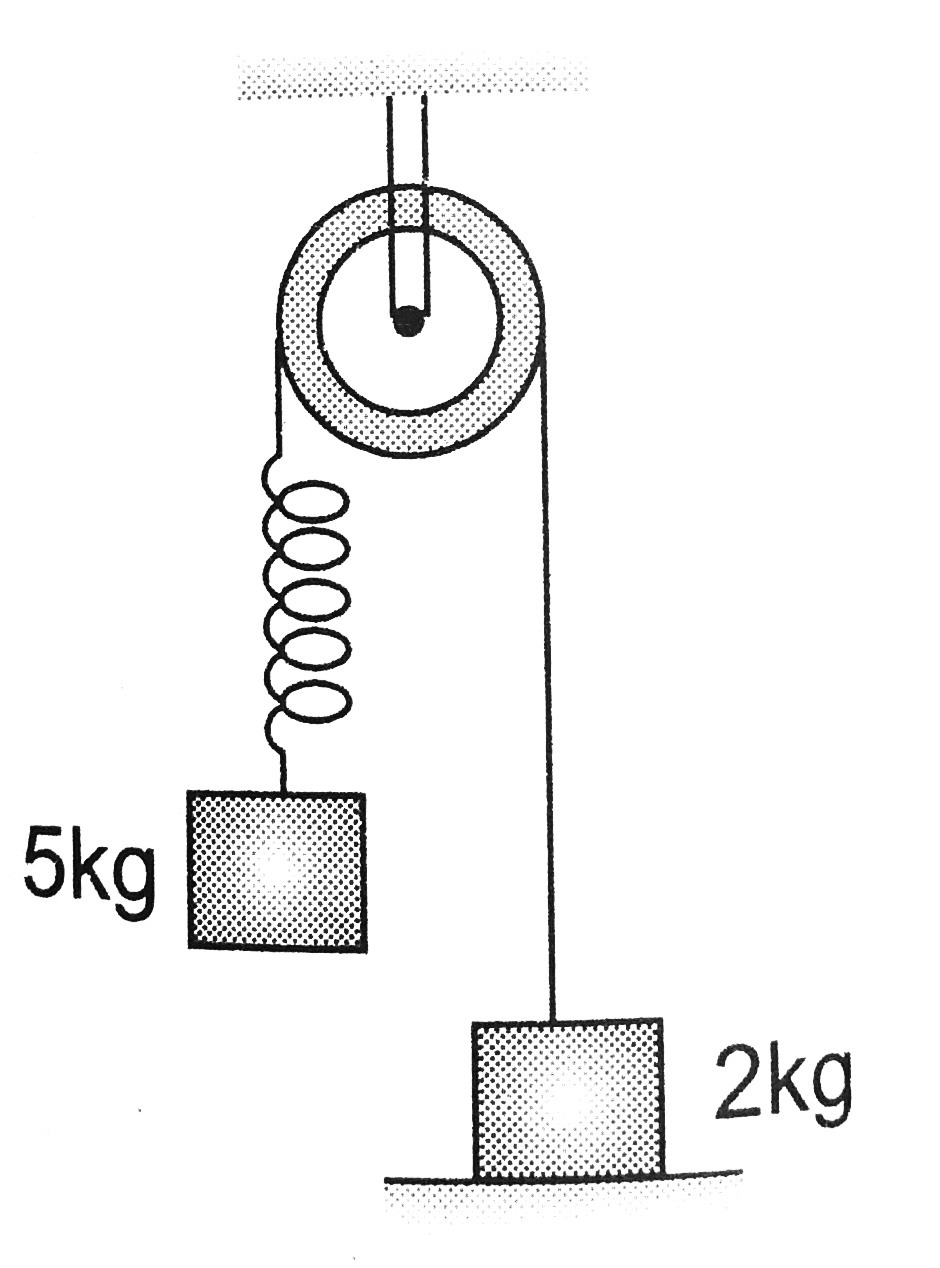
(a) √2ms−1
(b) 2√2ms−1
(c) 2ms−1
(d) √2ms−1
The correct Answer is:B
Let x be the extension in the spring when 2kg block leaves the contact with ground. Then tenstion in the spring should be equal to weight of 2kg block:
Kx=2g or x=2gK=2×1040=12m
Now from conservation of mechanical energy,
mgx=12Kx2+12mv2
⇒=√2gx−Kx2m=√2×10×12−404×5=2√2ms−1
Topper's Solved these Questions
- BOOK - CENGAGE PHYSICSCHAPTER - WORK, POWER & ENERGYEXERCISE - Multiple Correct25videos
WORK, POWER & ENERGY
- BOOK - CENGAGE PHYSICSCHAPTER - WORK, POWER & ENERGYEXERCISE - Linked Comprehension55videos
WORK, POWER & ENERGY
- BOOK - CENGAGE PHYSICSCHAPTER - WORK, POWER & ENERGYEXERCISE - Subjective23videos
WORK, POWER & ENERGY
- BOOK - CENGAGE PHYSICSCHAPTER - VECTORSEXERCISE - Exercise Multiple Correct5videos
VECTORS
Similar Questions
The block shown in figure is released from rest. Find out the speed of the block when the spring is compressed by 1 m
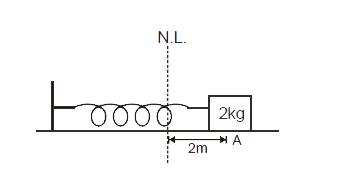 View Solution
View SolutionA block of mass 10kg is placed on a horizontal surface as shown in the figure and a force F=100N is applied on the block as shown, in the figure. The block is at rest with respect to ground. If the contact force between block and ground is 25n (in Newton) then value of n is : (Takeg=10m/s2)
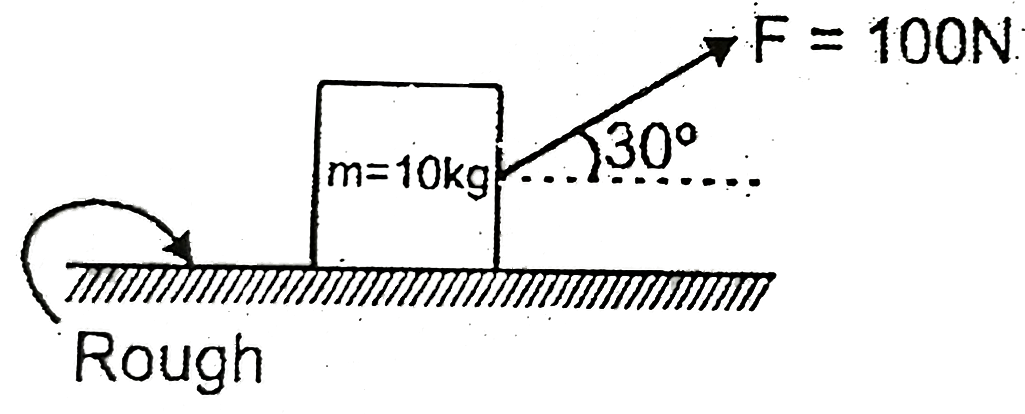 View Solution
View Solution
Knowledge Check
- Question 1 - Select One
System shown in figure is released from rest . Pulley and spring is massless and friction is absent everywhere. The speed of 5kg block when 2kg block leaves the contact with ground is (force constant of spring k=40N/mandg=10m/s2)
 A√2m/sB2√2m/sC2m/sD4√2m/s
A√2m/sB2√2m/sC2m/sD4√2m/s - Question 2 - Select One
System shown in figure is released from rest . Pulley and spring is massless and friction is absent everywhere. The speed of 5kg block when 2kg block leaves the contact with ground is (force constant of spring k=40N/mandg=10m/s2)
 A√2ms−1B2√2ms−1C2ms−1D4√2ms−1
A√2ms−1B2√2ms−1C2ms−1D4√2ms−1 - Question 3 - Select One
In the system shown in figure mB=4kg , and mA=2kg . The pulleys are massless and friction is absent everywhere. The acceleration of block A is.
 A10/3m/s2B20/3m/s2C2m/s2D4m/s2
A10/3m/s2B20/3m/s2C2m/s2D4m/s2
A block of mass 1 kg is released on wedge from position M as shown in figure (Neglect friction everywhere). The force exerted by vertical wall W on wedge, when the block is at position N is 152√P newton, then what is the value of P (Take g = 10 m/s2)?
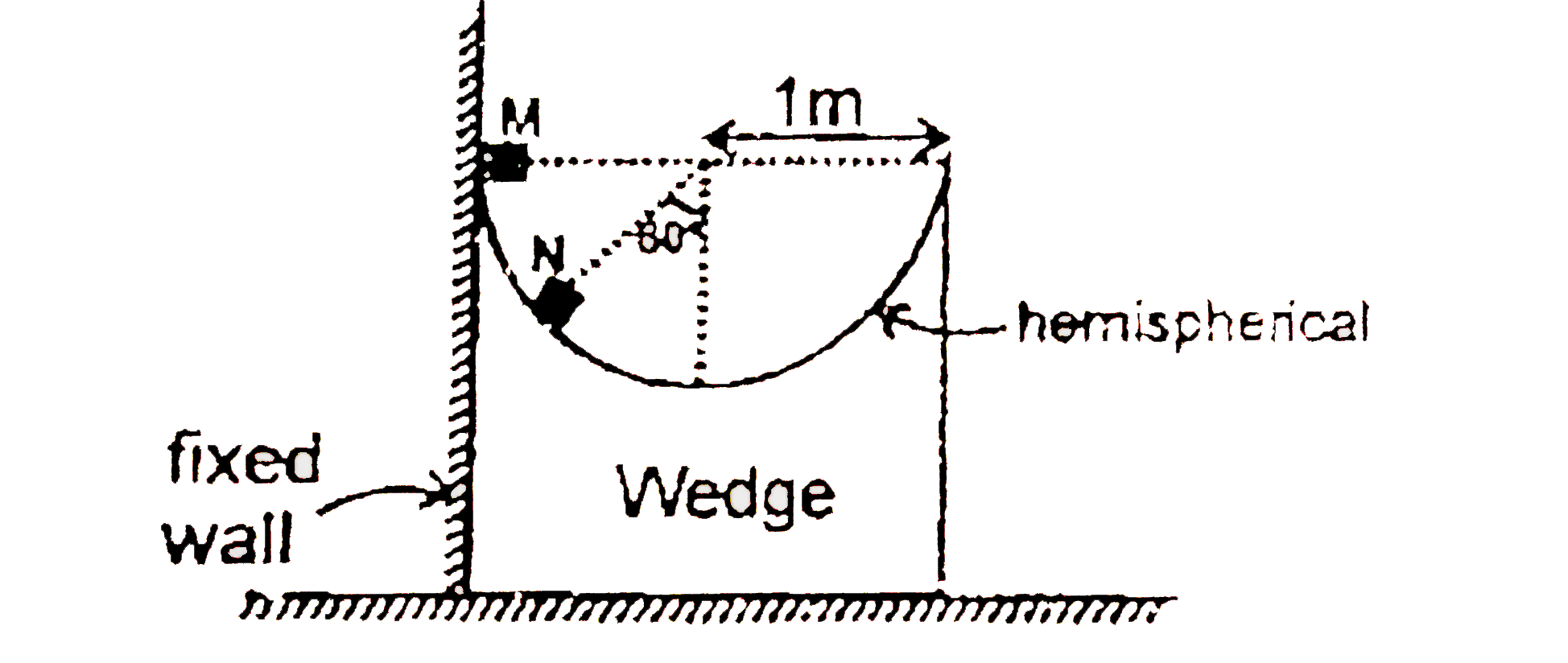 View Solution
View SolutionA planck of mass 5kg is placed on a frictionless horizontal plane. Further a block of mass 1kg is placed over the plank. A massless spring of natural length 2m is fixed to the plank by its one end. The other end of spring is compressed by the block by half of spring's natural length. They system is now released from the rest. What is the velocity of the plank when block leaves the plank? (The stiffness constant of spring is 100N/m)
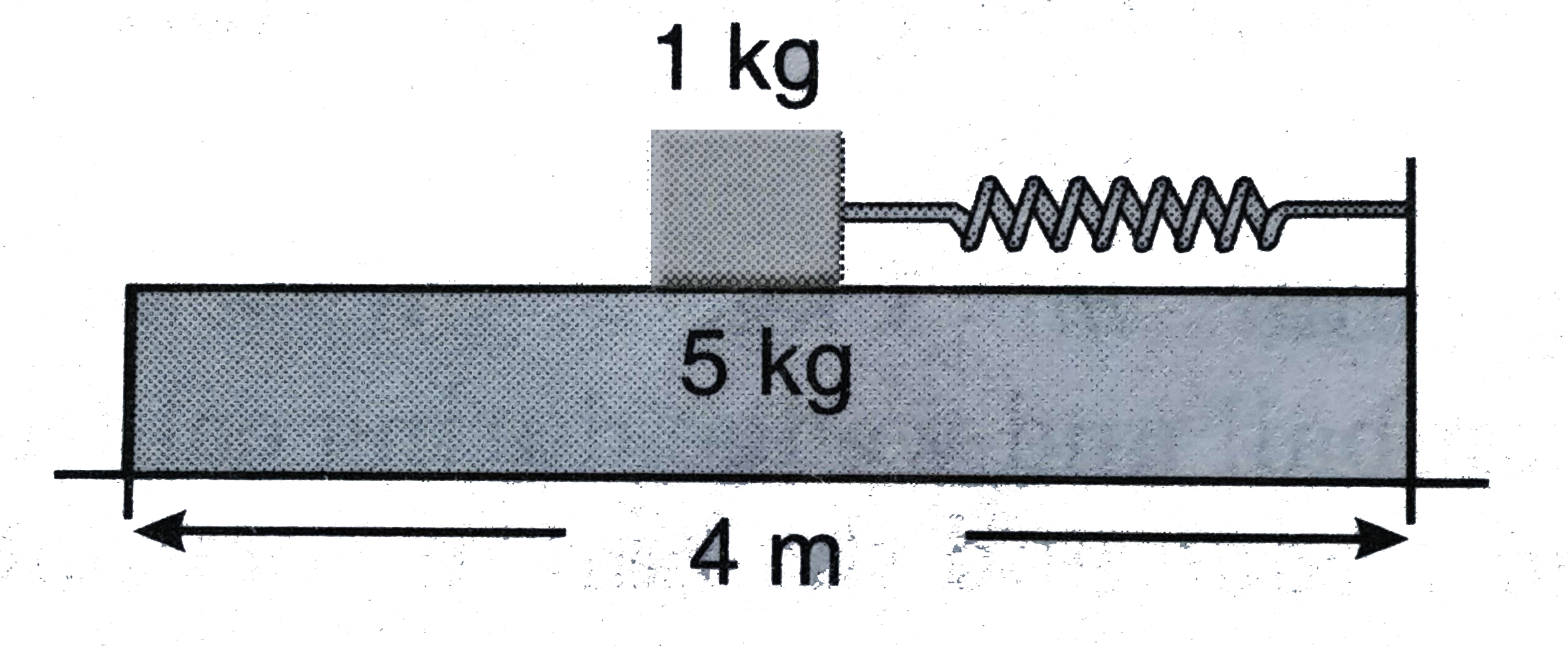 View Solution
View SolutionFrom the fixed pulley, masses 2 kg, 1 kg and 3 kg are suspended as shown is figure. Find the extension in the spring when acceleration of 3 kg and 1 kg is same if spring constant of the spring k = 100 N/m. (Take g=10ms−2)
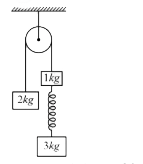 View Solution
View SolutionThe system is released from rest with both the springs in unstretched positions. Mass of each block is 1 kg and force constant of each spring is 10N/m.
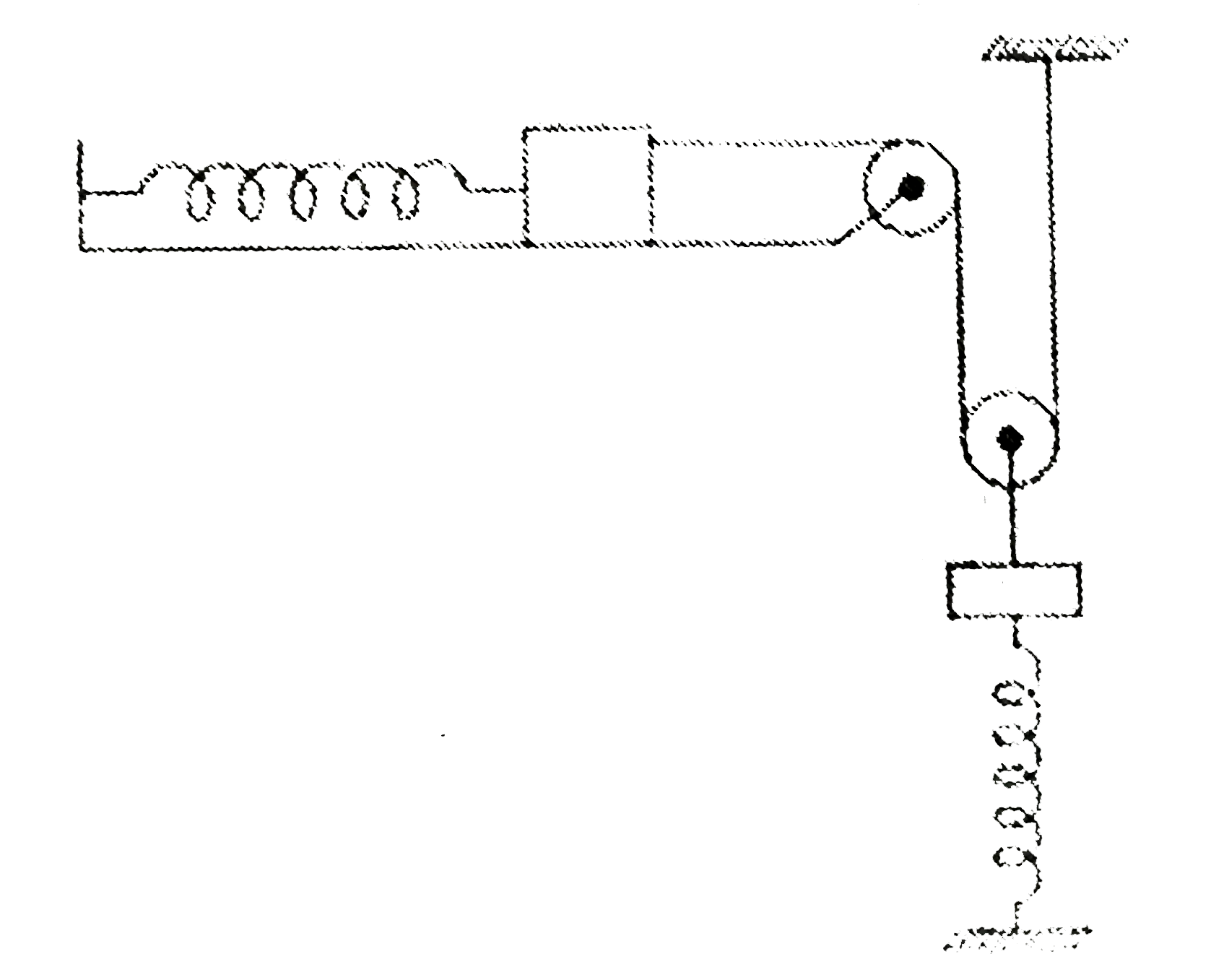
Extension of horizontal spring in equilibrium isView SolutionThe system is released from rest with both the springs in unstretched positions. Mass of each block is 1 kg and force constant of each spring is 10 N/m. Extension of horizontal spring in equilibrium is:
 View Solution
View Solution

